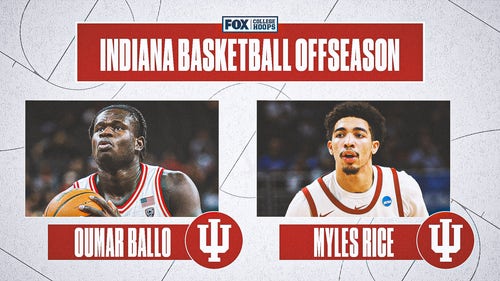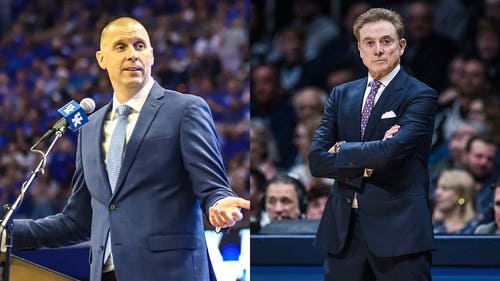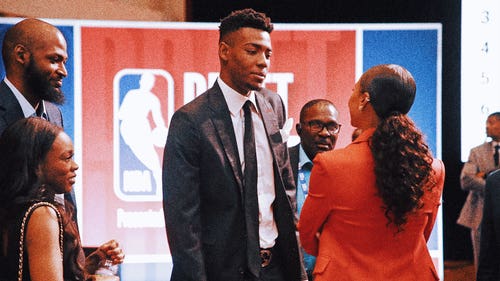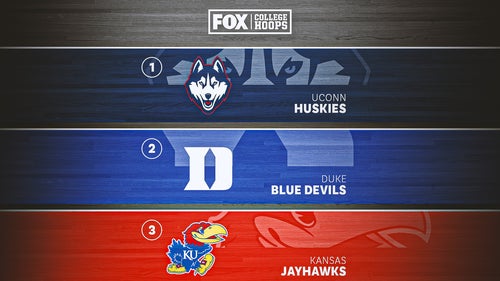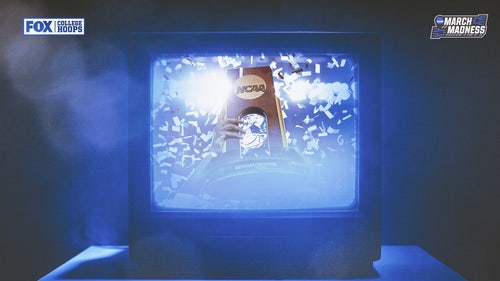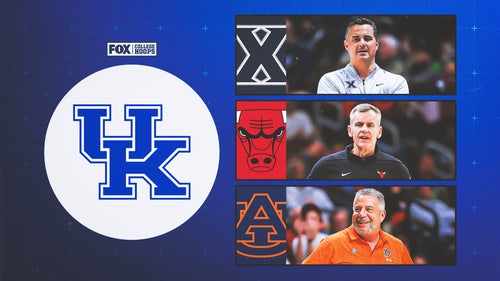
Cincinnati, finally on the offensive, looks primed for long stay in NCAAs
CINCINNATI — Like many freshmen, Troy Caupain was impressionable. And his impression of the Cincinnati basketball team he’d joined was this: A bunch of bad dudes, interested primarily in boa-constricting offenses until they submitted. A team that, as the 6' 4" guard puts it now, didn’t care if the score was tied at 10—the other side was not going to get to 11 first. Nor did Caupain permit himself to think there was maybe a better way, in which that asphyxiating defense could share space with a flowing, egalitarian offense. This was a program more than willing to rock-fight its way to victories. To the unseasoned eyes of a first-year player, this represented his present and future. “I was brainwashed,” Caupain deadpans.
He says this as he stands outside the Bearcats’ practice gym, an enlightened senior happy to speak in offensive terms at last. This season, Cincinnati deploys players who have an interest in staying on the attack on both ends of the floor. The Bearcats are shooting and scoring at rates the program has not seen in 15 years, taking care of the ball at a nationally elite rate and taking care to make sure everyone contributes: They start four double-digit scorers. Meanwhile, they’re once again a top-15 defensive unit. Far from the single-minded squad of three years ago, this unit seems capable of winning in many different ways in March.
They’ve certain been winning plenty, too: Cincinnati’s loss to fellow AAC frontrunner SMU on Sunday was its first Dec. 10, ending a 15-game win streak. And recent back-to-back grinders against two of the stingiest teams in the country shouldn’t skew the broader picture: The Bearcats understand how to make a point. “We try to read the game and play as smart as possible,” says 6' 9" forward Kyle Washington, the team’s leading scorer in his first season of eligibility after a transfer from NC State. “It’s all about reading a defense and what the defense gives you, and trusting your teammates that they’ll make a play.”
The awakening is of course relative: The Bearcats are 41st nationally in adjusted offensive efficiency, per kenpom.com. No one mistakes Mick Cronin’s team for a Rust Belt version of, say, UCLA. Midwestwood, this is not.

But the Bearcats do seem to be in a different place altogether. A team shooting percentage of 46.8% is the program’s best rate since the 1999–2000 squad collectively hit at a 48% clip. The 76.0 points per game are the most since the 2003–04 team averaged 76.8. Cincinnati has scored 90 or more points six times, the most since that 2001–02 team also reached the mark on a half-dozen occasions. Most notably, the Bearcats are this productive while being impeccably careful. They rank third nationally in assist-to-turnover ratio (1.62 to 1) and the top four scorers mostly aren’t reckless with shot selection. Only Caupain, at 39.7%, shoots worse than 46% from the floor.
So how did Cincinnati build a better offense? Cronin is not prone to overcomplicating things, at least in public forums, so his answer is fairly predictable. “Better offensive players,” he says.
“If you play guys that are limited offensive players, the other team is not going to guard them,” Cronin continues. “They’re just going to put all their focus on your guys that can score, so having five out there that can shoot makes you so much harder to play defense against. That’s it. It’s nothing else than that. People say, we’re running motion, we’re doing this, we’re doing that—yeah. Because we can.”
In 2013–14, options were limited. The Bearcats had a ball-dominating senior guard in Sean Kilpatrick, who averaged 20.6 points, and little else. This was the dynamic Caupain encountered as a freshman, and he’ll note it was effective in its own way: Cincinnati won 27 games that year.
But more able scorers began trickling into the program: 6’ 8" forward Gary Clark arrived the next year and has developed into a viable inside threat, shooting 54.6% and averaging 1.208 points per post-up, per Synergy Sports, good for the 90th percentile nationally. The following year, 2015–16, the Bearcats welcomed 6' 6" swingman Jacob Evans, a consensus Top 100 recruit in the Class of 2015 who is now the team’s second-leading scorer (13.5 points per game), and Washington, a strong post player (1.038 points per post-up) who has connected on 42.4% of his three-point attempts to boot. “I saw they had a few pieces,” Washington says. “I thought to myself, maybe I can add something to this group and even bolster it more.”

The result is a group whose go-to trash-talk line during practices and open gym sessions—You can’t check me—became a mantra. “We know everybody can score in their own way, and when they do it, you’re like, Yeah, that’s what you do,” Caupain says. “We move the ball, we try to get it in everybody’s hands. And if you have the opportunity to score, you score. If you don’t, you look to kick it out and somebody else has the opportunity to score. That balances it out. Nobody gets mad at one another, because it’s not one person taking the shot. One possession it’ll be this person. The next possession it’ll be a new person. You just keep clapping each other up, and you look up at the scoreboard like, dang, we all scored. “
Turning selflessness into production is another matter. But Cronin had an ideal sounding board for that.
In March 2011, the Cincinnati coach was certain Notre Dame was Final Four-bound. The Fighting Irish had won 26 games and were an NCAA tournament two-seed, and Cronin admired the team’s commitment to passing and ball movement and taking the best shot possible, not to mention the freedom and improvisation his friend Mike Brey encouraged. That Notre Dame would get upset by Florida State in the Round of 32 that year was somewhat immaterial; Cronin saw a squad with scorers at every position and that was darn near unguardable on its best nights. So, set to coach a Cincinnati team with multiple options this season, Cronin went to Brey for tips. “A lot of what we do is what they do,” Cronin says.
He has given his team other reference points; to demonstrate top-flight player movement, for example, Cronin has shown clips of the Golden State Warriors and San Antonio Spurs. But the Bearcats’ passing and lack of offensive mistakes is telling—a sparkling assist-to-turnover ratio is very Notre Dame. (The Irish rank second nationally this year and finished in the top six in that category in seven of the previous nine seasons). This explains why, when the two coaches caught up in the Bahamas last summer, Cronin told Brey: You’re going to think we’re the Irish. And it also explains why Brey regularly texts Cronin after games, checking in on Cincinnati’s assist numbers for that night.
“We should never force the ball to anybody, because we don’t have to,” Cronin says. “All we need to do is make sure we’re sharing the ball, break down the defense and [getting] the open man shoots.”

Getting too infatuated with offense in fact might be Cincinnati’s most significant challenge.
Defense, as Cronin puts it, is “the DNA around here.” Still, the guard is up in more ways than one. The Bearcats scored 82 points and shot 50.0% overall in a Feb. 4 win over Connecticut, but their head coach studied the fine print and came away displeased. Cincinnati charts defensive deflections every game, setting 40 per night as the bare minimum. The Bearcats managed just 18 deflections against the Huskies. Wary of slippage that could rot his team’s prospects over time, Cronin ran exacting, defense-first practices over the next two days. His message to the players: It was great that they made a bunch of shots against Connecticut. What happens when they don’t?
Auspiciously, the Bearcats shot 35.4% and scored just 60 points against Central Florida four days later . . . and still won by 10. “You’re gonna win on the night you score 80,” Cronin says. “If we score 80, we’re not losing. We have to win on the night we score 60. That’s how you make a run in March.”
A few years ago, any chance Cincinnati had was predicated on defensive effort, and that was fine. It was even fun in its own way, Caupain argues: Getting stops, getting steals, getting out on the break, getting the crowd into it. What the Bearcats have now, the senior guard says, is just different. “This year, it’s fun, too,” Caupain says. “Everybody is scoring. Everybody has a smile on their face.”
It could be late March before the expression changes, as long as Cincinnati keeps sharing the wealth, and the joy.






































































































































